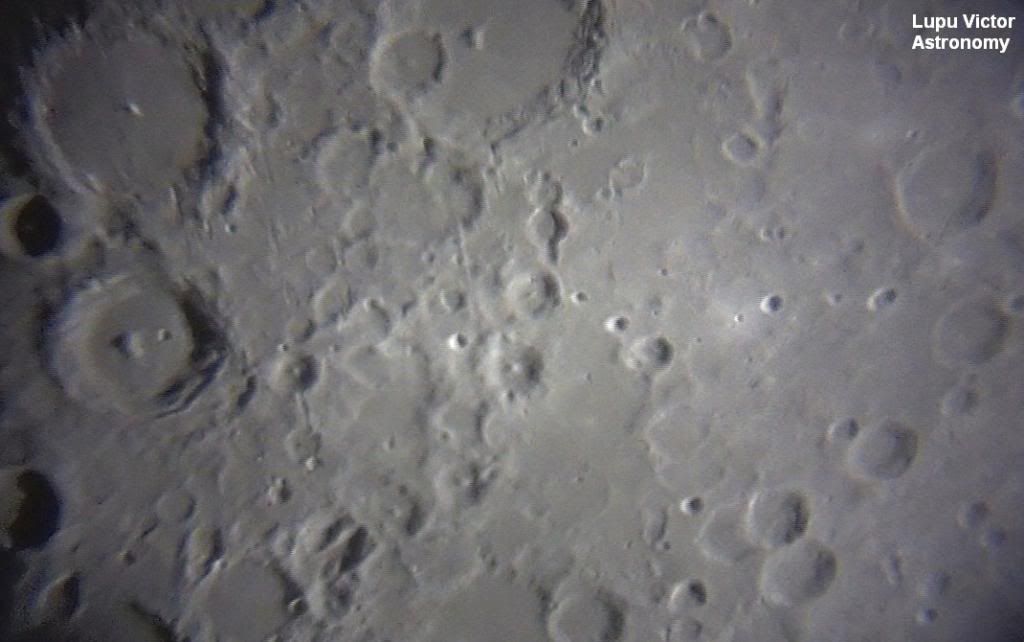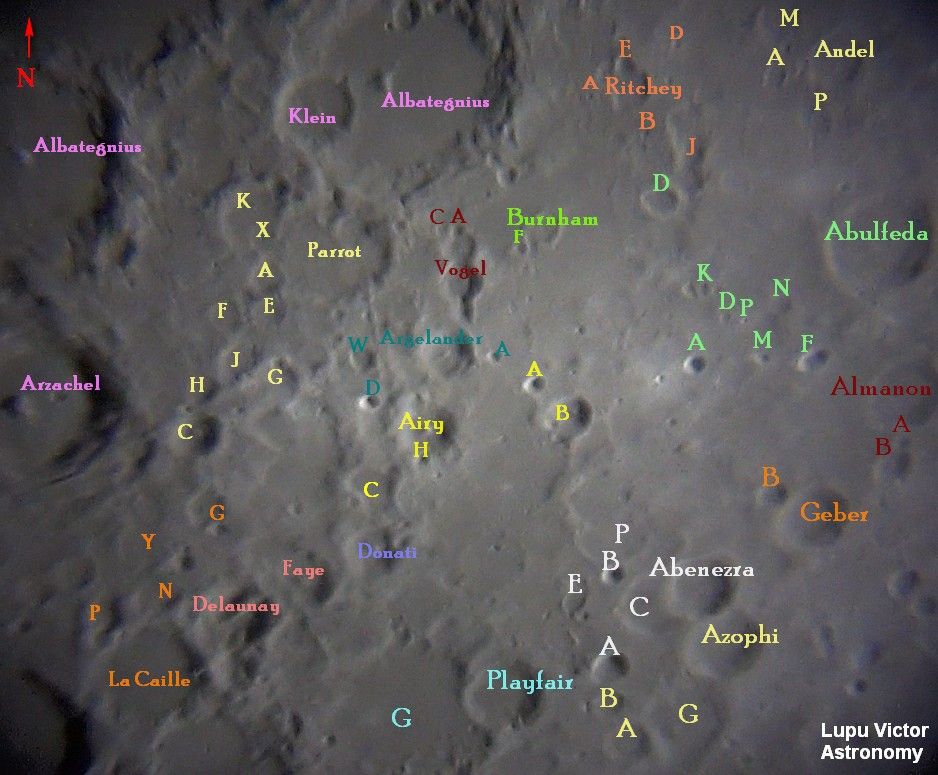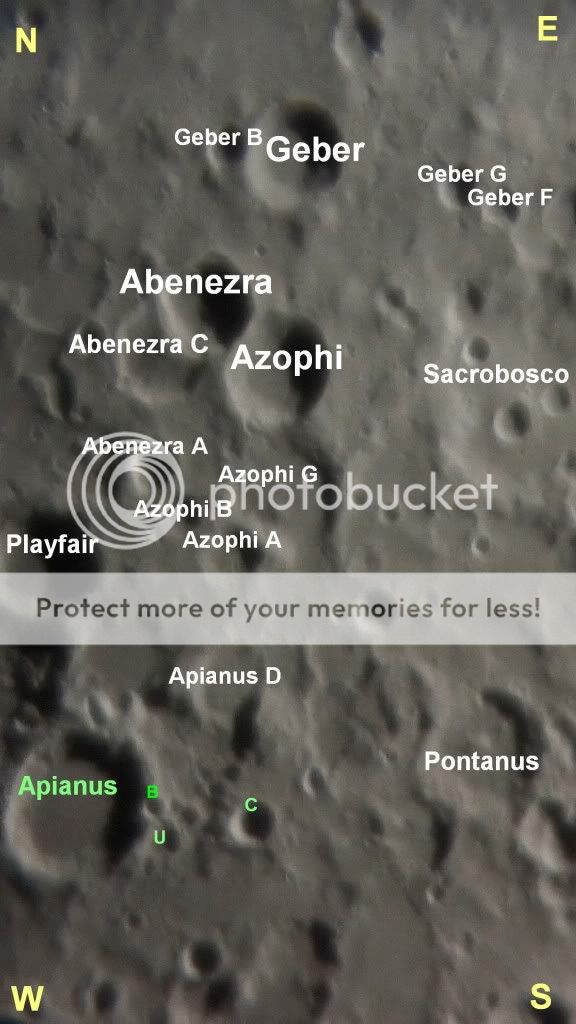Wednesday, 3 April 2013
Parrot Airy Abenezra and Azophi craters. Images by astronomical telescope
Abenezra and Azophi (42 and 47 km), are two craters similar in size, but not on other features. Abenezra's floor is very hilly on north, east and south, and on west is smoother. Seen from above, it is circular, but beveled on north. To the west, Abenezra is superimposed over another crater called Abenezra C (44 km). It is older than Abenezra because it has edge and floor worn by time, but also because Abenezra is over it, meaning that Abenezra C is older.
The same can be said about Azophi G (53 km), which is much older than Azophi and which is even larger in size. Azophi G has the same features as the area around it and the only distinction, is that the crater is very eroded, but its edge keeps a circular shape. Azophi is very distinct, with clear a floor and sharp edges.
Vogel crater (27 km) is interesting because forms an interesting duo with crater Vogel B. Other craters small in size are Argelander (34 km), Airy (37 km), Donati (36 km) and Delaunay (46 km). All these craters, are forming a chain from north to south-west, as seen in the picture below.
Moon age: 7 days
Stage: 51% (0% = New, 100% = Full)
Distance: 384.488 km
Optics: Celestron C8-Newtonian telescope, 20mm Plössl, 2x barlow
Mount: CG5 (EQ5)
Camera: Sony CX130
Filter: no
Date: 29/04/2012
Location: Baia Mare, Romania
Processing: video captures, FastStone Image Viewer
Above is an image from 10 February 2011.
IMAGES AND VIDEOS
About me
(8)
Astronomical Phylosophy
(5)
Astronomy Labels
(1)
Astronomy terms
(5)
Craters-Reinhold and Lansberg
(2)
Craters-Santbech
(5)
DSLR Hyperion pictures
(4)
DSLR astronomy pictures
(4)
DSLR telescope pictures
(21)
Occultations
(5)
Rima Ariadaeus
(4)
Rupes Altai
(10)
The colours of the Moon
(7)
Things about the Moon
(9)
Weird sightings
(8)




 Wednesday, April 03, 2013
Wednesday, April 03, 2013
 Unknown
Unknown







 Posted in:
Posted in: 


0 comments:
Post a Comment